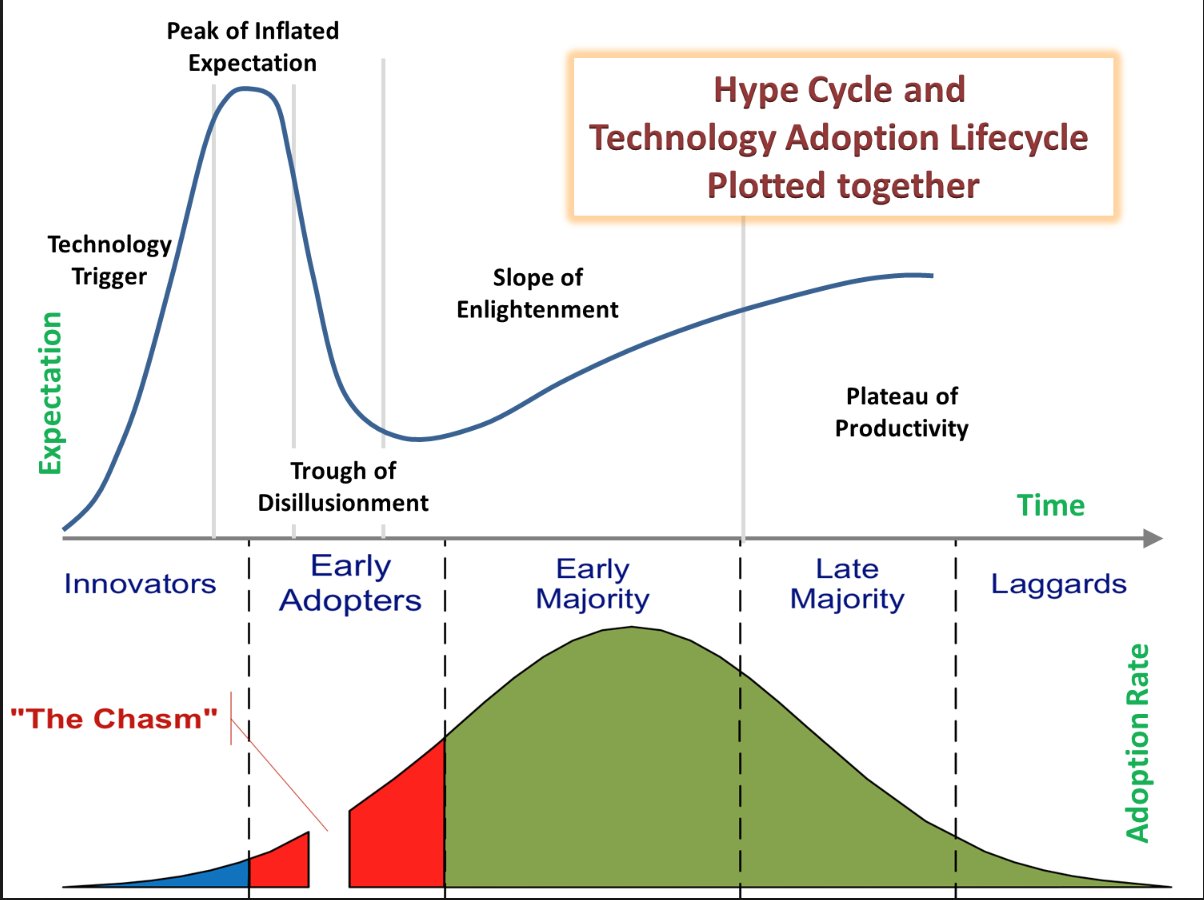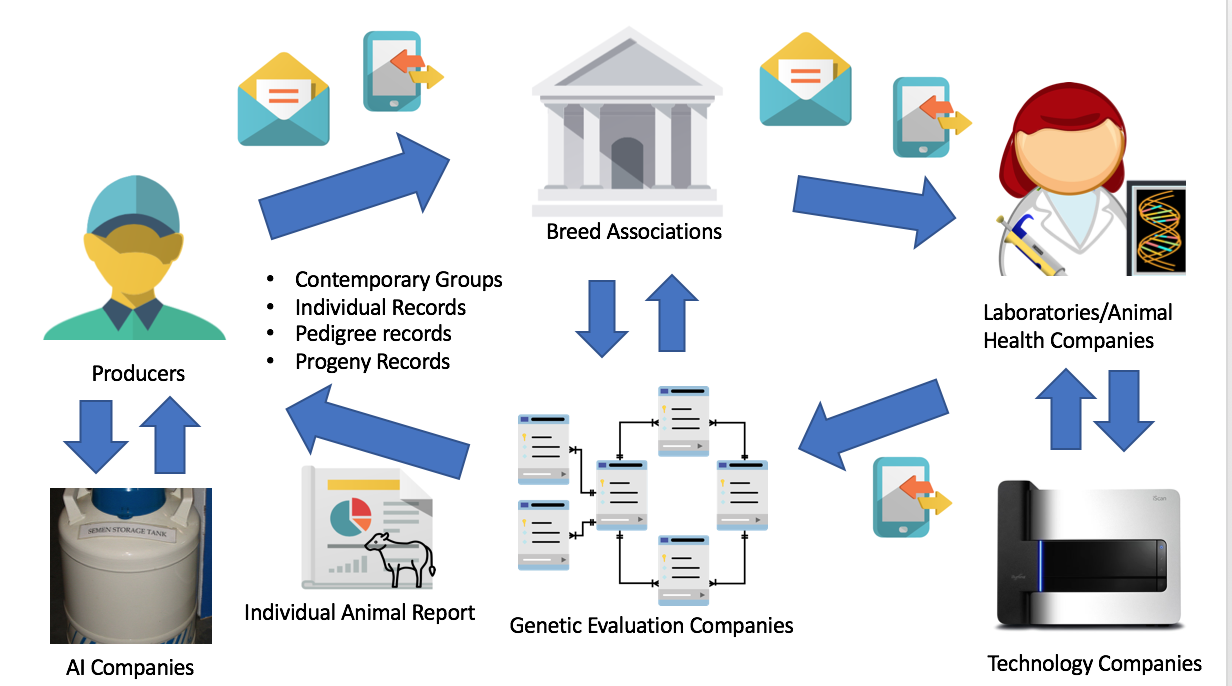I just got back from attending the Beef Improvement Federation (BIF) meeting held in Athens, Georgia. The last one I had been to, was in Nebraska, so I was ready to play catch up.
There were great discussions about many topics. The highly-awaited discussion on the two methodologies used to incorporate DNA into the traditional genetic evaluation, dubbed by the industry as the “1-step or Hybrid” was an important one.
One of the methodologies was developed by the University of Georgia (The UGA Platform) and the other developed by Theta Solutions (The BOLT Platform).
There were no below the belt punches. Clean fights. And after it was all said and done, the “fight” is tied. Two methodologies that address the same problem. Just like MACs and PCs. If you like MACs, you will go buy a MAC. If you like PCs, you will go buy a PC.
I can’t help but think about what the move to these new methodologies will do for the Beef Industry.
To quote Dr. Alison Van Eenennaam at the genome editing workshop at BIF “As technologies develop, there will be winners and losers”.
This article here is bound to ruffle some feathers across the industry…wait, not feathers, but tail hair. The reason for that is simple: the future of the breed associations is getting brighter and that scares some people and some companies.
Every once in a while, technology disrupters come around. Most people avoid new technologies like the plague. It wasn’t too long ago that the industry was introduced to genomics: a game-changer technology.
Let’s take a stroll down memory lane….
A little over 10 years ago, pharmaceutical companies got into the genetic/genomic testing business. They saw the opportunity to license genomic tests to be used in the cattle industry and introduced the opportunity directly to producers.
They, like many companies, were eager to launch their products and services trying to capitalize on the first-mover advantage.
In their defense, if they had waited for the Breed Associations to be ready, it would have taken forever. So, we do owe a lot to those companies. They paved the way for the industry to adopt the technology.
Things didn’t go very smoothly, but then again, everything that is new and causes disruption is bound to have some growing pains.
Many lessons later and a more mature market. We are no longer talking about whether genomics works, but rather how to tweak the current model to make the whole process more efficient.
If I could pick two things not to shortcut when introducing any new technology, I would pick Training and Development of those entrusted to use it. When we ignore those, the local markets and the technology suffer.
We are now over the trough of disillusionment and on the slope of enlightenment, but nowhere near the plateau of productivity.

In the case of the new methodologies for incorporating DNA information in the traditional genetic evaluation, I have already picked out one winner: The Breed Associations.
No longer bound by having the molecular breeding values (MBVs) calculated by the laboratories or animal health companies.
Many relationships across the industry will be changing. Which means that to continue to play, we will all need to adapt to those changes.
Progress is faster now, so if you wait too long to enter in the game, you might just be too far behind. To quote Dr. Tom Lawlor at this BIF meeting “Sometimes, it’s easier to stay ahead than to catch up”.
The playing field has been leveled because of genomics technology. In cases where those ahead fail to recognize a massive disruptor entering an industry, it gives opportunities for others to catch up (see the case studies section).
We have companies that came in way later to what was considered an 'already established' field, and because of the slow uptake of existing companies in recognizing the technology disruptors, the smaller companies are leaping or have leaped ahead.
I have put together a list of areas that companies need to start investing in (or continue to invest in) if they want to adapt to new changes (some of the items listed below will apply to other companies, not just the Breed Associations).

Source: Module 3: The Beef Industry - “Beef Genomics: From Basics to Launch” (courses.agfront.com)
Here are some key points that in my opinion will allow for the continuation of the 'embrace technology, embrace change' movement:
1 - Invest in Data Collection
The reason why genomics works is because solid phenotypic data were collected for years.
The reason why the industry stumbled early on was because there was a big hype about how genomics was going to substitute data collection.
The need for phenotypic data is not going away. So, technology companies...learn to 'get in the middle of it. 'It' being data collection.
To quote Dr. Daniela Lourenco also at BIF: “Genotypes are like credit cards. You can use them for a while, but then you will need cash (phenotypes), if you want to continue to use them”.
Don't collect data just so you can store them. Analyze them to get insights.
Genotyping is easy. Collecting phenotypic data is not. If you only do what everyone else is doing then you won’t differentiate yourself or your business.

Beef Genomics
From Basics To Launch
Welcome to the first step onto a road of transformation to Solve Real World Problems!
2- Invest in Data Analytics
Just as data collection is important, so is data analytics.
Collecting data just so you can store them does not do anything. You need to get insights about the data.
Business intelligence will be crucial in gaining further competitive advantage no matter what industry you belong to.
Start recognizing and investing in data analytics – whether it be bioinformatics or identifying business insights - to add value to your membership or customer base.
There will be no shortage of data to analyze, just in case companies are wondering if that’s an investment that is a passing fad.
3- Invest in Certified Branded Beef Programs
No Breed Association will build a branded beef program overnight. The reason why CAB (Certified Angus Beef) is jumping a billion times is because that program started in the 70's.
Breeders weren't all chummy with collecting data on carcasses. In fact, they didn't start seeing the benefits of that until the 90's. The moral of the story is that it does take time to build a system.
However, genomics will allow you to get there faster by adjusting your breeding objectives to produce a product that is in demand. Recognize the benefits of the final product that you are helping to create and promote it. Carve your niche. Classic marketing.
Learn the lessons from the ones that have gone through them and try not to make the same mistakes.
Start now and tweak it as you move along.
Case Studies
ST Genetics
It didn't take long for ST Genetics - formerly known as Sexing Technologies - to have the top 30 bulls (might be more now, but we will stick with 30 here.) in the industry. They weren't even an AI company. They came on the scene when they licensed a semen sorting technology from the USDA.
From there, they licensed the technology to AI companies. With the development of genomics, they realized that they needed to diversify - patents don't last forever - and so they started bidding on bulls and genetics and to vertically integrate their business.
Did you see who bought a dairy heifer for 251,000 dollars? Believe me, that’s not for show.
International Genetic Solutions (IGS)
When they first started, IGS had two customers for their newly released genetic evaluation business: The American Simmental Association and The Red Angus Association of America.
Fast forward 7 years later and they have 12 customers, a new genomic prediction platform (BOLT) and lots of plans.
They did 3 things correctly:
1 - Found customers in need of their services
2 - Hired and partnered with the right people
3 - Invested in technology early on
If placing high bets on technology is not in the cards right now for your business, try placing small ones to test it out first.
**Attention: After publishing this article, it was brought to my attention that AGI has also hired great people. Yes. I agree with that statement 100%. I know them. IGS hiring the right people doesn't negate the quality of hiring elsewhere. The point of the article is to state that when you start laying out the pieces of the puzzle a little earlier, it gets easier and faster to get to the final picture.
Bringing it all together
- It’s not enough to be in the middle of technology. You have to engage your members to learn and to believe in it.
- Breed Associations are no longer a registration organization. Promote your services and products like any other profitable company.
- Genomics has leveled the playing field and lowered the entry barriers to traditionally hard to enter industries. Use that opportunity to get in the game.
- We will continue to see existing and new players placing high bets on the high-stakes genomics game.
What do you think? Place your bets on who the winners and losers will be.
Genomics has leveled the playing field. Use that opportunity to get in the game.


Hi Elisa,
I enjoyed your article, but I have some comments. There are several important differences between Bolt and other options. The differences relate to the fact that Bolt uses a Gibbs sampler. Sampling allows us to enhance the accuracy of genomic predictions by using a “marker selection model”. The SSGBLUP approach cannot sample markers using marker selection. Our published research, and others have shown that a significant improvement in prediction accuracy is gained by marker selection modeling.
As much money as everyone is spending on tests, it is essential to use genomic information to its maximum advantage. Marker selection modeling squeezes more information out of genomic tests without increasing the cost.
Another advantage of sampling is that it results in a very high quality estimate of the accuracy. In all other methods for national cattle evaluation, the accuracy computation uses an approximation formula and suffers from a large approximation bias. This bias is virtually always up, resulting in substantial over-estimation of accuracy values, especially on young animals. Only sampling can achieve an estimate of accuracy that is equal to its expectation.
Keep up the good work and don’t hesitate to contact me if you would like more information.
Kind regards,
Bruce L. Golden
Managing Partner
Theta Solutions, LLC
Elisa, very well written and provoactive to say the least. Breed associations serve many masters including people raising pets to the gene jocks that believe genomics alone are the answer.
Thank you all for the feedback!
Bruce,
If you can share the articles with any comparative results, I will be happy to include it in the post. Others do claim to have similar features, so I am glad you have included your contact information. That way, if anyone has any questions about the platform they can contact you directly.
On a side note, I was happy to see your presentation on cow fertility and how you are fitting the models for AHA. I think that right there is a huge differential for your business. You are customizing it and spending a significant amount of time with your clients to optimize the system.
Best Regards,
Elisa